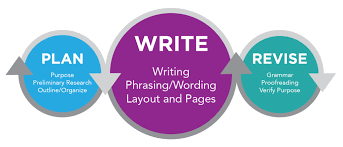Report Writing: A Step-by-Step Guide

Introduction: In the dynamic landscape of academia and professional environments, the ability to convey information effectively through reports is a crucial skill. Whether you're a student, a researcher, or a professional, understanding the steps involved in report writing can significantly enhance your communication prowess. In this comprehensive guide, we will walk through the essential steps to craft a compelling and well-structured report.
- Step 1: Understand the Purpose and Audience Before you embark on the writing journey, it is imperative to clearly define the purpose of your report. Ask yourself: Why am I writing this report, and who is my target audience? Understanding these aspects will guide your content, tone, and level of detail. Whether it's informing, persuading, or analyzing, a well-defined purpose will set the foundation for your report.
- Step 2: Conduct Thorough Research Robust research is the backbone of any good report. Gather relevant data, facts, and information from credible sources. Ensure that your research is comprehensive, covering all relevant aspects of your topic. Keep track of your sources for proper citation, maintaining the integrity of your report.
- Step 3: Plan Your Structure A well-organized report follows a logical structure. Begin with an introduction that provides context and outlines the purpose of your report. Follow this with a clear and concise methodology, detailing how you conducted your research. The main body should present your findings, arguments, or analysis, divided into sections for clarity. Finally, conclude by summarizing your key points and offering recommendations or insights.
- Step 4: Craft a Strong Introduction Your introduction serves as the gateway to your report. Capture your reader's attention with a compelling opening, succinctly stating the purpose and importance of your report. Provide a brief overview of what the reader can expect, setting the tone for the rest of the document.
- Step 5: Develop a Clear Methodology In the methodology section, explain how you gathered and analyzed your data. Be transparent about your research methods, ensuring that your audience can understand and replicate your approach if necessary. This adds credibility to your report and allows others to validate your findings.
- Step 6: Present Your Findings Effectively The main body of your report is where you present your findings, arguments, or analysis. Organize this section coherently, using headings and subheadings to guide your reader. Support your points with evidence and analysis, maintaining a logical flow throughout. Visual aids such as graphs, charts, or tables can enhance clarity and understanding.
- Step 7: Craft a Concise Conclusion Summarize your key findings and insights in the conclusion. Revisit the purpose of your report and highlight its significance. Avoid introducing new information in this section; instead, focus on reinforcing your main points and leaving a lasting impression on your reader.
- Step 8: Edit and Revise Once you have completed your initial draft, take the time to edit and revise. Check for clarity, coherence, and consistency in your writing. Ensure that your report adheres to the required formatting and citation style. Consider seeking feedback from peers or colleagues to gain valuable insights.
- Step 9: Proofread Carefully Before finalizing your report, conduct a thorough proofreading session. Check for grammatical errors, typos, and formatting issues. A polished and error-free report enhances your credibility and professionalism.
Conclusion: Mastering the art of report writing is a skill that pays dividends in academia and the professional world. By following these nine steps, you can navigate the complexities of report writing with confidence, delivering a document that is informative, compelling, and well-structured. Remember, effective communication through reports is not just a skill; it's a valuable asset that sets you apart in any field.
-Thank you